14 Nights / 15 Days
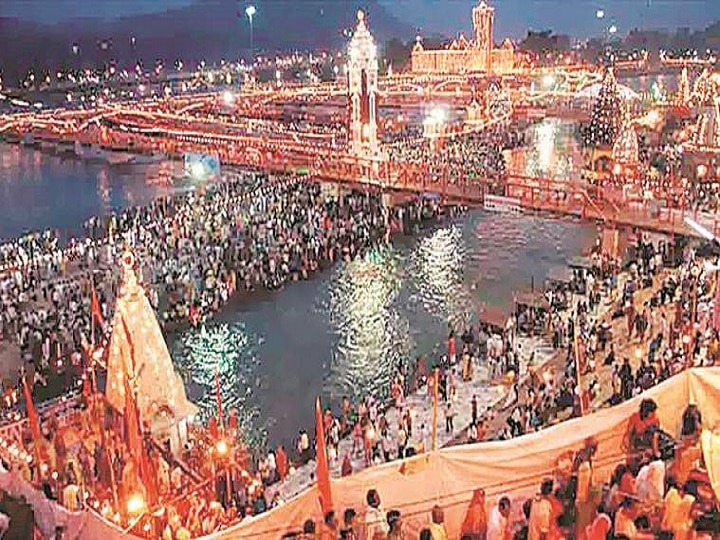
Arrival at Varanasi Airport / Railway station, pickup and transfer to the hotel. Later visit New Vishwanath Temple (B.H.U.), Sankat Mochan Temple, Tulsi Manas Mandir, Durga Mandir, Tridev Temple. In evening Ganga Aarti with Boat ride (Direct Payment) at Main Ghat. Overnight stay at Varanasi.
Note :-Gange aarti takes place at 6.45 PM Summer / at 6.15 PM Winter in the evening after the sunset for around 45 minutes at the Dashashwamedhghat in the Varanasi. Devotees have started to come to see the Gange aarti at least one hour before
Early Morning at 5.30 am proceed to Gangaji for holy dips and visit Main KashiVishwanath Temple, Annapurna Temple, Vishalakshi Temple &KaalBhairav Temple. After Breakfast at 10.30 am proceed drive to Bodhgaya , One of the most important pilgrimage sites for Buddhists, Bodhgaya is a village in the state of Bihar. It was here under the Bodhi tree that Gautama Buddha attained enlightenment. The place is bustling with pilgrims all through the year who come to pay their homage in the monasteries, shrines and temples. It also attracts tourists from India and abroad owing to its magnificent Buddha statue, the Mahabodhi Temple and the Bodhi tree.
Bodh Gaya is the very place that houses the Mahabodhi tree, under which Gautam Buddha meditated and attained enlightenment. The Mahabodhi Temple built near the Mahabodhi tree is highly revered and it is an enriching experience to visit the temple. One can still find the remnants and descendants of the original Mahabodhi Tree. Bodh Gaya is the single biggest pilgrimage for all sects of Buddhists throughout the world. It is now one of the UNESCO World Heritage Sites check in hotel & Visit Main Temple in Bodhgaya , Overnight stay at Bodhgaya.
Morning 06:00 AM proceed drive to Gaya visit Vishnupaad temple is located on the bank of river Falgu River and has footprint of Vishnu incised into a block of basalt. People believe that Lord Vishnu killed Gayasur by placing his foot on Gayasur’s chest.
The old temple of Vishnupad was later renovated by the queen of Indore, Devi Ahilyabai in eighteenth century. While Hindus claim that footprints in Vishunpad temple are of Lord Vishnu, Buddhists consider them the footprints of Lord Buddha. The temple is nevertheless a major pilgrim destination. The name of Gaya is based on the myth of demon Gayasur who Lord Vishnu had killed in a dual.
The place is so sacred for Hindus that even Lord Ram had performed Pindadanam here for his ancestors. Legend says that Lord Ram had come to Gaya to pay homage to his ancestors and Sita had accompanied him on his way.
MangalaGauri( ShaktiPeeth ) The shrine of ManglaGauri, who is believed to be the first wife of Lord Shiva is worshiped here. The two rounded stones that symbolize the breasts of the mythological Sati have been considered sacred among Hindus. After breakfast visit , Great Buddha Statue, Chinese Temple, Royal Bhutan Monastery. Move drive back to Varanasi. Overnight stay at Varanasi.
After Breakfast proceed drive to Allahabad via visiting Vindhyachal Devi , Vindhyachal, a town in Mirzapur district, situated on the bank of River Ganga is one of the most respected Shaktipeeths of Goddess Vindhyavasini. Referred in the ancient scriptures, Goddess Vindhyavasini is believed to be the instant bestower of blessings. Best known for the several shrines dedicated to the Goddess, this holy town also offers the visitors a chance to come close to natural wonders. Though Vindhyachal is a bustling town soaked with religious fervour, there is also a tranquil side not to be missed by the visitors. Located on banks of River Ganga, the land boasts green landscapes giving nature lovers their share of treat.
visitTriveniSangam One of the holiest places in Central India, in Allahabad (Prayagraj). In fact it is the meeting point of three rivers - Ganga, Yamuna, and Saraswati (which is a mythical river, supposed to have dried up more than 4,000 years ago). All three rivers Ganga, Yamuna, and Saraswati are highly revered rivers in Indian mythology, and hence the confluence point of these rivers hold tremendous religious importance. It is one of the places where the KumbhMela is held once every 12 years. The exact date of the Mela is determined according to the Hindu calendar “ Panchanga “
According to Hindu mythology, taking a bath in the holy TriveniSangam is supposed to flush away all the sins and free you from the cycle of rebirth. Moreover, the Sangam itself is a beautiful and peaceful place to visit. The brownish Ganga meeting the slightly greenish Yamuna is indeed a sight to behold. If you take a boat ride to the gently flowing waters of Ganga and Yamuna, you'll be able to make out the difference in colours of water from the two rivers. There are also makeshift wooden banks made at the Sangam. Hence, devotees who want can take a bath right at the confluence point. The water is clean enough at the Sangam for a bath, especially during the winters; and also not very deep, so it is fun to take a dip in the water here. Alopi Devi Mandir is situated next to the place where the Ganga, Yamuna, and Saraswati rivers converge. This temple is one of the holiest in India. It is believed that when Sati was burnt, Lord Shiva was moving around the sky with her body. When Lord Vishnu saw this sight, he threw his chakra at the corpse to relieve Lord Shiva from the immense pain. All the places where her body parts fell are considered sacred till today and called the “Shaktipeeths.' Alopi Devi Temple is considered the place where the last part fell, and Sati disintegrated. The striking feature of this holy shrine is the wooden cot also known as doli, which is worshiped and not a deity inside the temple. Devotees from all over the country visit this place for its sanctity. The Navratri festival is celebrated on a grand scale here with utmost spectacle and joy. The temple is unique and definitely worth a visit.
Allahabad Fort is a splendid work of architecture that was built during the reign of Akbar, the Mughal Emperor in 1583. The marvellous structure is located on the banks of the confluence of the Rivers Ganga and Yamuna in the North-Indian state of Uttar Pradesh. Allahabad Fort is well-known for being the largest fort ever built by Akbar. This famous attraction draws thousands of tourists from all over the world not only for its historical importance but also for its architectural magnificence. However, one should note that quite unfortunately, access to Allahabad Fort is generally closed to the common public. Tourists are allowed inside only during the KumbhMela, which is held once every 12 years. Nevertheless, the glorious architecture and the massive build of the monument as it stands strong on the banks of the confluence of the two rivers is a sight to behold!
The Allahabad Fort holds a huge sigmificance and is managed by the Archaeological Survey of India. This is quite a big occasion - especially for a lot of locals who have heard stories and legends about this fort but haven't got a chance to visit it in person. The fort is also quite well known for its Akshayavat Tree (Banyan Tree) which, according to a legend, was used by the locals to commit suicide to attain salvation. For those who wish to see the Akshayavat Tree, entry is allowed through a small gate to only the area that is occupied by the magnificent tree. The fort is also home to the Patalpuri Temple, which is said to be home all the gates of hell. The best way to explore the Allahabad Fort from outside is on a boat ride in the river either during sunrise or sunset.
Hanuman Temple Colloquially known as Bade Hanuman Mandir, Hanuman Temple is located at Sangam area of Allahabad. The temple is possibly the only one of its kind for it is constructed under the ground and the posture of Lord Hanuman is in a leaning back position. The shrine is a popular pilgrim spot in the city and stays especially busy on Tuesdays and Saturdays.
Ashoka Pillar Placed outside the Allahabad Fort, this 16th century structure was constructed by Emperor Akbar. The exterior of the Ashoka Pillar has inscriptions from Ashoka in the Brahmi script. Even Samudragupta and Jahangir have added some inscriptions later in the Gupta script, a refined version of Brahmi. AnandBhavan is the former residence of Nehru family which has now been transformed into a museum showcasing various artefacts and articles of the era of Independence movement in India. When the prior residence of Nehru's family SwarajBhavan started to be used as an office of Indian National Congress, a new Nehru residence was designed by Motilal Nehru, a notable independence movement leader, and politician.
The double-storey mansion was personally designed by Motilal Nehru. The house was beautifully adorned with the wooden furniture imported from China and Europe and was decorated with various artefacts from all around the world. The mansion has an important historic value not only because of its construction but also for the major role that it has played in the history of India. It was visited by many famous freedom fighters to develop the conspiracies to drive Britishers out of the country. In the year, 1970, AnandBhavan was donated to Indian government by Indira Gandhi, to convert it into a National museum to keep intact the legacy of Nehru family. Allahabad Museum gives the visitors a beautiful insight into the history, culture, heritage and independence movement of India. The museum is situated inside the famous Chandrashekar Azad park, where he sacrificed his life. It is surrounded by lush green gardens all around it, which gives the museum a very pleasant feel. The museum is most famous for its rock sculptors, the miniature paintings from Rajasthan, terracotta from Kaushambi, literary and artwork from Bengal School of Art. The museum displays some great artefacts of the art, history, archaeology, architecture, environment and literature. Beginning from the historic era of Harappancivilisation, the artefacts of the medieval period, the carvings from the Gupta period and Khajuraho, to the Independence struggle of India against the British, Allahabad museum is a treasure of Indian history. Overnight Stay at Allahabad .
Early breakfast and proceed drive to Chitrakoot visit ChitrakootDham Chitrakoot is a spiritual retreat, situated in the famous Bundelkhand region of Uttar Pradesh. This town is quite popular for its role in the famous epic Ramayan, when Lord Rama and Goddess Sita, along with Lakshman, had stopped for a while here in exile,
Ram ghat, Mandakini river is lined up by ghats called Ramghat. Ramghat is where lord Ram, Sita and Lakshman appeared in front of the famous poet Tulsidas and he used to sit on the river side and write Ram CharitraManas.
The fragrance of incense sticks and the hymn of holy chants by the saints in saffron clothes makes the soul calm and touched. You can go for boating in the river and enjoy the beauty of this place until the evening and attend the arti with beautiful diya lightings, sounds of bell and holy chants.
Hanuman Dhara, There is a stream of water falling upon the deity of lord Hanuman releasing in a kund and there are langoors in this area which are well associated with Hanuman, the monkey God.
Hanuman Dhara is the name of the spring which sprouted from a rock when Lord Ram shot an arrow into it to calm down an enraged Hanuman when he came to this place to extinguish the fire that was caught in his tail after he returned from burning Lanka Kamadgiri,Kamadgiri is a forested hill with the base surrounded by multiple Hindu temples on all sides and is considered to be the heart of Chitrakoot. The name is derived from Kamadnathji, another name of Lord Rama and it meant fulfiller of all wishes.
People perform Parikrama around this hill with the belief that all their sorrows will be ended and their wishes will come true by doing so. There are several temples on the 5 kilometres path of the Parikrama, one of them is the famous Bharat milaap temple, where Bharat met lord Ram and convinced him to come back to his kingdom. Gupt Godavari, This is a pair of caves, in which there is a tiny entrance, through which one can barely pass. Water trickles down in streams through the other cave, which can rise up to the length of our knees. It is said that Lord Rama and Lakshman once held their secret meetings, which is validated apparently by the throne like structures present in the cave.
Although Chitrakoot is primarily a spiritual destination, there are some hidden surprises for bold travelers, especially those with a taste for adventurous, sometimes risky trips. Among such surprises is the series of caves named Gupt Godavari. One would be surprised as to how this cave is largely unknown to the world, despite its mystic charm matching the likes of Elephanta caves, Ajanta and Ellora caves as the list goes on. This is a place that is slowly emerging as one of the most popular destinations of India, owing to the enigmatic charm of nature Sati Anusuya ashram, is located amidst thick forest, about 16 km away from the town. As per Hindu mythology, it is here that Maharishi Atri along with his wife Anusuya and three sons lived here. It is believed that Lord Rama along with Sita visited this place to meet Atri Muni and his wife Anusuya. It is here where Sita was explained the importance of Satitva by Sati Anusuya.
It is the starting point of the dense forests of Dandaka, which was ruled by Ravana. As per the great sage Valmiki, there was no rainfall in Chitrakoot for ten years. As a result, there was drastic famine and nothing was left for the birds and animals to eat or drink. Sati Anusuya performed tapasya and brought River Mandakini down to earth, resulting in the end of sufferings of sages and animals.
Sphatikshila, is a place with two monstrous rocks which are accepted to have the impressions of Lord Rama and Goddess Sita. SphatikShila truly implies precious stone shake and is situated in the midst of thick woodlands, near JankiKund on the banks of stream Mandakini. It is said that Sita and Rama were unwinding here and a crow pecked the feet of goddess Sita which unsettled ruler Rama and he removed the eyes of the crow, however the crow was really a type of Jayant, child of Lord Indra. SphatikShila is of delicate stone as powder stone. It has an amazing story candidly included to Lord Rama. In like manner this huge stone was where Rama used to unwind and rest at whatever point he had a craving for doing as such. The stone marvelously turned as delicate and smooth as silk keeping in mind the end goal to give calming impact to Rama, at whatever point he laid on this stone.Valmiki ashram etc. Move drive to back to Allahabad. Overnight stay at Allahabad.
After Breakfast proceed Ayodhya check in Hotel . Hanuman Garhi is one of the most popular temples in the region. Legend has it that Lord Hanuman used to live here to protect Ayodhya. Set amidst shops selling religious articles and besanladdoos, visitors are required to park a short distance away and take a walled-in flight of over 70 steps to reach the temple.The sanctum is stocked with profusely painted pillars, brackets, and stucco figures. The main temple houses a statue of Mata Anjani and Bal Hanuman seated on her lap.
KanakBhawan Temple in Ayodhya is dedicated to Lord Ram and his divine consort Goddess Sita. The magnificence of this place and the deities installed in the sanctum leave the devotees spell bound. Built more as a sprawling palace rather than a shrine, the KanakBhawan Temple resembles the magnificent palaces of Bundelkhand and Rajasthan region of India. The history of the temple dates back to Treta Yug. According to local legends, Queen Kaikayi, Lord Rama’s stepmother had gifted this palace to Goddess Sita, her newly arrived daughter-in-law and step son Rama. Later, a grand temple was built by the royal house of Orchha and Tikamgarh in the late 19th century. A high-ceilinged hall with arched doorways on three sides across a massive courtyard houses three sets of gold-crowned idols of Lord Rama and Goddess Sita under a silver canopy. Unlike other shrines, the airy, open spaces of the evidently Bundela influenced architecture of KanakBhawan allows for quiet corners and comfortable ambience. The idols of Lord Rama and Goddess Sita are exquisitely adorned with gold ornaments, from which the temple derives its name – ‘kanak’ meaning gold.
Mani Parvat This is the place where some parts of sanjivniBooti fell off while Lord Hanuman was carrying the huge mountain of SanjivniBooti to Lanka to save injured Lakshman, brother of Lord Rama. The hillock, about 65 feet high, was later named as Mani Parvat.
NageshwarnathTemple is dedicated to Lord ShriNageshwarNath, the presiding deity ofAyodhya. It is believed that this beautiful temple was built by Lord Rama’s sonKingKusha. TheShivalinga present in thetemple is quite ancient. As per folklore, King Kush was taking bath near River Saryu when his armletfell in the water; it was picked up by a naagkanya who was in love with him. Since shewas a devotee of Lord Shiva, King Kush got the temple constructed for her. Being one ofthe most important and venerated temples in Ayodhya, it attracts large crowdsofdevotees from all over during the festivals of Trayodashi and Mahashivaratri. The presentedifice of the temple was constructed in 750 AD.
Nandigram (Bharat Kund) The holy kund is 15 KM from Faizabad. This is believed to be the site where Bharat, the brother of Lord Rama did tapasya (deep meditation) for his return from exile and ruled the kingdom of Kosala on Lord Rama’s behalf. It is presently a peaceful and serene place to spend some moments in tranquillity and practice meditation away from the chaos. People also come here to perform the shraddh ceremony (prayers for departed ones) and also take a dip in the Kund. It also facilitates guesthouses with basic amenities.
Ram Janmabhoomi Temple is one of the major attractions of Ayodhya. It is considered to be the birthplace of Lord Ram the 7th incarnation of Lord Vishnu. The place has an utmost significance for the devotees of Lord Rama. Visitors pour in from around the world to take a glimpse of this divine attraction.
Ram kiPaidi is a series of ghats on the bank of River Saryu. The river front brings forth an outstanding Landscape especiallyin floodlit night. These serve as platforms to devotees who it is said, come towash away their sins by taking a dip in the river. Shish Mahal This magnificent temple, is dedicated to Lord Rama and Mother Sita. The temple is inlaid with cut-glass and stained inexquisite patterns. It dates back to the 14th century AD.
Tretake Thakur Temple is located at the NayaGhat of Ayodhya. It is dedicated to Lord Rama, who is known as ‘Tretake Thakur’. It is believed that this temple has been built over the place where Lord Rama had performed the AshvamedhaYajna. About 300 years ago, the King of Kullu built a new temple here, known as ‘KaleramkaMandir’. In 1784, the Maratha Queen, AhilyabaiHolkar of Indore, renovated this temple. It houses the idols of Rama, Sita, Laxman, Bharat, Shatrughan, Guru Vashishtha, Hanuman, Sugreev and guards – Jai and Vijaya which are made of black sandstone and believed to have been recovered from the original Ram temple that stood near Saryu River. The temple opens only once a year, on Ekadashi (eleventh day) of ShuklaPaksha in Kartik Month. The day is celebrated with pomp and gaiety along with a special pooja. Huge number of devotees visits the temple to offer prayers to the deities. Overnight stay at Ayodhya .
Early breakfast and proceed drive to Namisharanya , Naimisharanya (Neemsar) is a land steeped with Hindu mythology linking it to Lord Brahma, Lord Vishnu, Goddess Sati and Lord Shiva. The place is unique owing to the belief that it is the land where the pantheon of 33 Hindu God & Goddesses reside. It also believed to be the firs t most sacred of all pilgrim centres for Hindus. It is said that if one performs penance for 12 years on this land, one moves to Brahmaloka. The place is located on the banks of River Gomti in Sitapur district at a distance of 94 Km from Lucknow. This place finds mention as a dense forest in several ancient scriptures, including the Mahabharata. It is definitely worth a day trip to visit the various shrines. A paved street encircling the town connects the primary shrines and visitors can cover the circuit in a couple of hours &visit Chakratirth Legend has it that the consequences of an imminent Kalyug drove many sages to Brahma to seek refuge. He rolled his Chakra (wheel) across Earth and told them to follow it till it rests; it is believed that Chakratirth is the place where Lord Brahma’s wheel cracked through the Earth developing a large source of water. However, due to high flow of water the saints then requested Lord Brahma to help them. On Lord Brahma’s request then arrived Goddess Lalita Devi who re-established the Chakra (Wheel) and controlled the flow. This formed a kund (pond) here, known as Chakra Kund. Today, this spot is surrounded by a promenade dotted with shrines honouring many Hindu deities.
DashashwamedhaGhat This is the place where Lord Rama performed the tenth AshwamedhaYagna. The spot is marked by an ancient temple with idols of Lord Rama, Lakshman along with Janaki and Lord Shiva called SiddheshawarMahadev.
Hanuman Garhi After his victory over Ahiravana in PatalLok, Lord Hanuman first emerged here, hence the place draws high significance for his devotees. There is a magnificent stonecarved statue of Lord Hanuman, with Lord Rama and Lakshman sitting on his shoulders. The temple is called, Dakshineshwar, as idol of Lord Hanuman here is facing southwards.
MisrikhTeerth or DadhichiKund When ousted from devlok by the asura Vritra who could only be killed by a pious object, not weapons DevrajIndra pleaded to Vishnu, who advised him to request Maharishi Dadhichi for his ribs; the sage reluctantly agreed. Indra is said to have then fashioned a Vajra and slain the demon. All of this transpired in Misrikh, 10 KM away, where a temple, ashram (hermitage) and kund (pond) mark the event.
Vyaas Gaddi This is the place where VedVyaas divided the Vedas into 4 main parts and formed Puranas. He preached ShrimadBhagvathgita and Puranas to his disciples Jaimini, Vaisamaayam, ShukDev, Suth, Angeera and Pail. There is an ancient Banyan Tree which is said to be a blessed and is believed that anyone who performs Yoga under this tree can get rid of even an incurable disease. move drive to Lucknow , Overnight stay at Lucknow.
After Breakfast Sightseeing of Lucknow , The ‘Muskuraaiye Aap Lucknow Mein Hai’ Welcome Sign says it all, it is basically a prediction than a statement that construes, days spent in this capital city will be the best memories you are going to have! Lucknow’s exquisiteness makes one speechless, and it allures history buffs, foodies and explorers, big time. That Tundayke Kebab, the Rahim kiNihari, the fun outing at Kukrail, the picnic at the Indira Dam; day exploration of Imambara, and the nighttime hangout at Marine Drive never let one’s hope down. Ringed around with rich artistic and cultural ambiance, Lucknow certainly calls out to be one of the best places to visit.
Bara &ChotaImmamBada The superior structure of Bara Imambara offers a feeling of bygone era as you wander in the midst of the mughal ruins. This monument that has been standing still since 1784 will amaze you by its beauty and might. It is an important place for the Muslims and it receives millions of devotees during the religious festival of Muharram. An interesting fact about Bara Imambara that will blow your mind is that, the central hall is said to be about 50 meters long, thus making it the largest arched hall in the world and an unsupported structure, now this is something mind boggling. Inside the complex, you can also explore the Asifi Mosque and ShahiBauli.
HazaratGanj There is always that one favourite place to chill and relax and ‘Ganj’ as it is locally called offers just that. Hazratganj is a renowned attraction, placed in the city’s central area, similar to the casual crowd puller of Delhi’s Connaught Place and the MG Road of Bengaluru, this vibe seekers’ corner is the best place to shop, slurp, eat and simply ‘walk the talk.’ Ganj is intact with a number of coffee shops and fine dining restaurants like Royal Café, JoneHing, and Chedilal. Here you can also find the popular PaanchPaniKeBataashe (Golgappas with five assorted flavoured water) that shouldn’t be missed. And the best time to visit is during the onset of darkness when the entire place illuminates with glittering lights; it is also when Lucknow’s night crawlers meet for jaunty activities. While here, watch out for Ram Advani Booksellers, they are the best for bookworms. Ganj’s vicinity also comprises a number of iconic historical monuments, for instance, the DilkushaKothi and Lucknow Residency.
British Residency In the vicinity of other monuments such as Bara Imambara, TehriKothi, and High Court Building, this picturesque British Residency is a famous attraction that must be visited. The complex houses several buildings constructed during the rule of NawabSaadat Ali Khan II. Those were the times when it served as the residence for the British Resident General, today however, it is adorned with rustic shattered walls oozing a solitary beauty. The ruined buildings are surrounded by green carpeted lawns and alluring flowers and plants and calming ambiance. There also exist a cemetery that has the graves of Sir Henry Montgomery Lawrence, a British soldier and statesman in India, who died in the Siege of Lucknow during the Indian Rebellion; and that of around 2000 men, women and children of that era. If you want to seek peace, or simply spend some time amidst tranquillity, British Residency is a place for you.
Lucknow State Museum The Lucknow State Museum takes the guests to the trip of history and lets the history freaks lost in the primordial times. This museum is extremely impressive with its etchings, decorative arts, woodworks, housing sculptures, paintings, bronze statues from the ancient epoch. The unique artifacts present in this museum are the must see things for all. Some of the major charms of this museum are beautiful painting of landscape from Kalpasutra displaying an elephant rider from sixteenth century, a 17th century jar of wine that bears the name of Aurangzeb Alamgir, and a copy of Harivansha written in Persian language. Moreover, to add on to these eye catchers, there is an Egyptian Mummy and its sarcophagus of 1000 B.C, a PanchmukhiShivlinga, and a statue of Balarama. There is also a sculpture of Saraswati that forms an essential part of items that are preserved in this museum.
1857 Memorial Museum, The great residency of Lucknow takes a history buff back to the historical rebellion of 1857. All the ruins of this revolt came under the conservation of central government in the year 1920. These reminiscences are in the same condition as they were at the time when they came under protection. The main aim behind establishing this museum is to keep alive the memories of the first war of independence. It is situated in a part of the main Residency building. In past, this museum was used to display the model of the complex of Residency. This magnificent museum includes pictorial records of first struggle for independence, old photos, paintings, lithography, documents, model of Residency, and the objects like swords, medals, guns, shields, rank badges, and cannons and so on. Gandhi Museum GandhiSmarakNidhi set up the Gandhi Museum on 28 July 1973. This museum was established to throw light on the life and thoughts of Mahatma Gandhi and to keep the remembrance of the 'Father of the Nation" alive in the memories of people, particularly the youth.
There are almost 250 pictures set in a proper sequence according to the life journey of Mahatma Gandhi. This collection highlights the making of Mahatma from a student, lawyer, social servant, revolutionist, freedom fighter to the "Father of Nation". Overnight stay at Lucknow.
Early Breakfast at Lucknow& Transfer to Agra Taj Mahal, as the most beautiful building in the world, Taj Mahal is located in the historical city of Agra. It was built by the Mughal Emperor Shah Jahan as a memorial for his third wife, Mumtaz Mahal. Constructed entirely out of white marble in the 17th century, it is among the finest edifices of Mughal architecture. Recognized by the UNESCO as a world heritage site, this monument is also considered to be one of the seven wonders of the modern world. Every year visitors numbering more than the entire population of Agra pass through the magnificent gates to catch a glimpse of this breathtaking monument, and only a few leave disappointed. Shah Jahan said about the Taj that it made "the sun and the moon shed tears from their eyes".
The Taj Mahal stands for the Crown of Palaces in the Persian language. It rises from the dust-beaten earth of U.P but even the wildest imaginations leave visitors underprepared for this world wonder. Covering an area of approximately 42 Acres, the Taj Mahal was constructed using white marble obtained from Makrana in Rajasthan. Overnight stay at Agra .
After Breakfast check out from Hotel & Visit Sri Krishna JanmaBhoomi also known as Katra Keshav Dev temple, is the actual birthplace of Lord Krishna. A bigger temple was constructed to replace the old temple during the reign of Emperor Chandragupta Vikramaditya (4th century CE). This temple used to one of the grandest temples in India until it was destroyed by Ghazni Mahmud in 11th century. In 1150 AD, Jajja during the rule of Vijay Pal Deva rebuilt the temple but the temple was destructed by other Muslim ruler Sikandar Lodi in 16th century. The fourth temple was built during the rule of Mughal emperor Jahangir by Veer Singh Bundela of Orchaa. But it was again destroyed by Aurangzeb in 1669 AD and a mosque named Jami Masjid was built in the place of the temple. During British rule Madan Mohan Malviya took the land from Raja Krishna das of Banaras. Later on, inspired by him few leading personalities like Jugal Kishore Birla, JaidayalDalmia and many others formed a private trust to overtake the construction work on the site and finally the temple was completed in 1965. Presently the temple is headed by MahantNrityagopal Das.
According to the legend, King Vasudeva and his wife Devaki were imprisoned by Kansa, the king of Mathura at this place. He imprisoned them due to a prophecy which stated that the king will be killed by his sister's child. The temple is constructed over the prison, which is believed to be the birthplace of Lord Krishna.
The temple here can be divided into three parts - Garbhagriha (actual site of birth), Keshavadeva and the BhagvataBhavan. Another temple, dedicated to the Ashthabhuja Ma Yogmaya stands near the entrance of the sanctum sanctorum. The prison cell was gradually turned into the present beautiful temple. The temple shares a common wall with the mosque and devotees have to undergo a security check.
Several artifacts along with utensils, old statues and a rock based slab have been excavated from this site. The artifacts are displayed in a museum near the main temple which is not to be missed. One can also find several shrines dedicated to other Hindu gods in the temple premises.
Lakhs of devotees throng to this temple during Janmashtami. The festivities and celebrations during the festival are famous all over India. Celebrations begin during mid-night with the birth of Bhagwan. Holi and Diwali are also celebrated here with great pomp and fervor.
After Breakfast Delhi Sightseeing Tour S/no. Itinerary Duration
Birla Mandir 30 Minutes
India Gate 25 Minute
Parliament House By Pass
RashtrapatiBhawan 30 Minutes (Photo Session)
Indira Museum 30 Minutes
QutabMinar 35 Minute
Lunch Break near QutabMinar Arr. 02.00 P.M. Dep. 02.30 P.M.
Lotus Temple 45 Minute
Raj Ghat / Shantivan 30 Minutes
Shakti Sthal / Veer bhumi 30 Minutes
Red fort By Pass
Come back to Hotel , Overnight Stay at Delhi .
After Breakfast transfer from Delhi to Haridwar& Check in Hotel& Visit Ganga Aarti Ganga Aarti Haridwar is performed at Har Ki Pauri Ghat in Haridwar. Ganga Aarti in Haridwar is one of the most famous in Haridwar. Visit to Haridwar is not complete if you have not seen its Ganga Aarti.
Ganga Aarti means prayer for River Ganga. Prayers are dedicated to gods and godesses. River Ganga is not just a river in India, It is Divine Mother. River Ganga gives life in the form of water. The same water also removes sins when you take a dip in its holy water. River Ganga also gives liberation to souls. Its not just a river but whole culture itself. Historically millions of people are living on the bank of the river ganga. For agriculture her water is still precious for India. River Ganga is considered godess which was originally living in heaven. Saint Bhagirath made a long meditation to give liberation to his ancestors (reduced to ashes due to curse of sage Kapil). He was blessed with Ganga by gods. Lord Shiva held her to reduce her mighty flow. When Ganga flow on the remainings of acncestors of Bhagirath they got Moksha (Liberation from the cycle of death and rebirth). Following the same tradition still Hindu people offer remainings of their dead relatives (after bunring the body) to the river Ganga and expect the moksha for them. In the name of the saint Bhagirath river ganga is known as Bhagirathi at the source and gets name Ganga when it is meeting Alaknanda River at Devprayag. Since hundreds of years people are considering river ganga as holy river and it became part of thier life where they come to get moksha for their relatives which passed away and to remove thier sins. The Ganga Aarti is kind of thanks giving to River Ganga.
History of Ganga Aarti It is very difficult to say when the tradition of Ganga Aarti started. However the Ganga Aarti at Har Ki Pauri was started by Pundit Madan Mohan Malviya in 1910s. Recently he was awarded as "Bharat Ratna" highest civilion award by Indian Govt. The small island infront of Har Ki PauriGhat is named after him.
Early Morning visit Ganga Ji for holy dips at Har ki Paudi One of the holiest sites in Haridwar, Har Ki Pauri attracts millions of Hindu devotees from almost every corner of the globe. It is the place where most of saints head to when they want to attain nirvana (the state of eternal happiness). Located in the foot of the Garhwal Himalayas, Har Ki Pauri remains packed with devotees and tourists all round the year. However, the glory of this holy temple as well as a revered Ganga Ghat is at its height during the Kumbh Mela season in the holy town of Haridwar
Visit Bharat Mata Temple Chandi Devi Temple is located at a distance of 4 km (2.5 mi) from HarkiPauri. Ropeway & Trekking to medium , There are too many places of worship in this holy town. One of the most significant of these is the Chandi Devi Temple, situated on the top of the Neel Parvat. The temple is so named, as it remains dedicated to the goddess Chandi Devi. The famous temple was built back in 1929, by Suchat Singh (the then king of Kashmir). The Ganges, which flows by one side of the temple, enhances the overall beauty of the Chandi Devi manifolds. The temple carries a lot of significance, as it has the privilege of being counted among the famous Shaktipeethas in Norther India. If you want to have a wish fulfilled, you can pay a visit to the holy temple of Chandi Devi and pray to goddess Chandi Devi. Both Hindus and foreign tourists from all around the world visit the temple of Chandi Devi to see the goddess' blessings. The temple has a wonderful legend associated with it. According to the Hindu mythology, Lord Indra's kingdom was taken over by two demon kings named Shumbh and Nishumbh. When the demon kings crossed their limits, Chandi Devi was given birth from the cells of goddess Parvati.
Since the temple of Chandi Devi is located on top of a hill, the journey up there is also quite exciting. There are two options to get to the holy temple - either you can enjoy a steep climb for a duration of 45 minutes or you can take help of the ropeway which can take you there in a couple of minutes.
Mansa Devi Temple is located at a distance of 800 mt from HarkiPauri . The Mansa Devi temple happens to be one of the oldest holy places in the town . It is visited by tourists from all corners of the world. Dedicated to goddess Mansa Devi, the temple occupies a wonderful position atop the BilwaParvat. The temple is mostly popular for having wishes fulfilled. It is said that pilgrims who pray to the goddess with a pure heart can get their desires fulfilled by the blessings of goddess Mansa Devi. There are various means of reaching the temple of Mansa Devi in Haridwar. Taxis and auto-rickshaws are frequently available to get to the temple. Or else, you can also avail of the cable care facility to reach the temple. There's yet another way of reaching the temple. You can enjoy an exciting trek of a few minutes to reach the temple's location. Close to the Mansa Devi temple are located a number of shops. These shops sell a variety of things which you can use as offerings at the temple. Visitors can purchase incense sticks, garlands and fruit to offer to goddess Mansa Devi, spouse of Nag Raja Vasuki.
While visiting the temple, you can never miss a visit to a holy tree which lies close by. Pilgrims don't forget to tie threads around this tree. It is said that tying threads around the tree can fulfill one's wishes by the grace of goddess Mansa Devi. In addition to paying a visit to the temple, visitors and pilgrims can also enjoy a heartstirring view of the entire Haridwar town from the top of the BilwaParvat. Maya Devi Temple is located at a distance of 1.5km from HarkiPauri. The temple of Maya Devi carries a lot of significance in the mythological history ofHaridwar. Visitors to this holy town make a beeline to seek the blessings of goddess Maya Devi to whom the temple is dedicated. The temple is more popular among visitors because it completes the Siddhapeeth Triangle in Haridwar along with the temples Mansa Devi and Chandi Devi. A pilgrim's visit to Haridwar is deemed to be incomplete without visiting the Mansa Devi Temple.
The temple has an ancient history. It's mythological history goes long back to the 11th century. Maya Devi, to whom the temple is dedicated, is believed to be the goddess of shakti (meaning power).
Like other popular temples in Haridwar, the Maya Devi temple is also associated with an interesting legend. Hindus believe that Sati (Lord Shiva's spouse) burnt herself to take revenge for his father's insult by her husband. Upon getting the news of Sati being burnt, Lord Shiva was filled with rage. He then took Sati's burnt body and set off on a tour across the universe.
During Lord Shiva's tour, different body parts (as they were burnt) fell down in different locations of the world. According to the Hindu mythology, Sati's navel fell down where the Maya Devi temple is located today. That's how the Maya Devi Temple came into existence. It is due to this reason that Hindus from all parts of the world hold this temple in high regard.
TriveniGhat. A confluence of three holy important Rivers the Ganges, the Yamuna and the Saraswathy, is a most revered sacred bathing spot in Rishikesh and is situated on the banks of Ganges River. It is of belief that those who take a dip in water at this ghat washes away all the sins and purifies the soul and will have salvation, a relief from all sins carried out; the water here has the power to purify them. Daily in the morning and evening there are thousands who take bath here and enjoy the MahaAarti being performed.It very soothing to sit on the banks of the river and enjoy the cool breeze from the river.
Trayambakeshwar Temple, On the east bank of the Ganges at LakshmanJhula Bridge, is 13 stories high, with different deities throughout. Bharat Mandir Built by AdiguruShankraCharya around 12th century, Bharat Mandir is situated in the heart of the old town on the banks of the Ganges. The Inner sanctum of the temple has the idol of Lord Vishnu, carved out of a single Saligram. In the inner canopy above the idol is Shree Yantra installed by AdiSankrayaCharya. Ram Jhula is situated 3 Km north of Rishikesh, Is an iron suspension bridge. It is made over river Ganges to cross the river and is a landmark of Rishikesh. Ram Jhula has been added recentlyconstructed between Shivananda Ashram and Sawargashram. The fresh air and sound of flowing water, the scenic beauty of the region can be seen from the bridge.
LakshmanJhula - LaxmanJhula - LaxmanJhoola, - is a 450 feet long an iron suspension bridge situated in Rishikesh in Indian state of Uttarakhand. LakshmanJhula is one of the most prominent landmarks at Rishikesh. It is made over river Ganges to cross the river and is a landmark of Rishikesh. It is said that Lakshman crossed Ganges on jute ropes between the place where this bridge is built. LakshmanJhula was built in 1939. There are spectacular views from the bridge. Gita Bhavan. Place of Guru Shri Ram SukhDaasji, (the great thinker of his time) Popular among the Hindu Brahmin Community. Twice a year people gather at this ashram to read the Ramayana together.
Swarg Ashram, Shri 108 Baba SaliKamli Wale Swami AtamPrakashJi. Swargashram( Heavenly Adobe) as the name connotes is a beautiful place situated in picturesque surroundings at the foot of Himalayas on the left bank of the Ganges between Rishikesh and Laxmanjhula. It is the spiritual “ground zero” of Rishikesh, filled with a concentration of ashrams and temples. The areas is known for its healthy and satwik living environment. It is this spot where from ages of yore the famous Yogis and Rishis have been doing the Tapasya. Numerous mention of this spot occurs in the holy scripturePuranas.
ParmarthNiketan. One of the few Ashrams left in India where Kids get the Vedas Education. Must Visit in Evening for the Pooja/Aarti. 5 PM in Winter and 6 PM in summer.
NeelkanthMahadev Temple is situated on the outskirts of Rishikesh, around 12 km away, is a revered temple, known as ‘NilkanthMahadeo’. Perched on top of a hill, at a height of around 1675 m, the temple is dedicated to Lord Shiva. Legends say that the venom that oozed out while the ‘SamudraManthan’ was ingested by Lord Shiva at the place which is now known as the NilkanthMahadeo.
VashistaGoofa: One hour drive from Rishikesh up river is situated VasishthaGoofa , where famous saint vasishthameditaed on the banks of the Ganges. The cave is very peaceful and is a perfect place for meditation.
After breakfast proceed drive to Delhi , Check in Hotel ,in evening free for own Activities . Overnight stay at Delhi
After Breakfast departure transfer to New Delhi Airport / Railway station for connect Flight / Train to next destination with sweet memories.
Trimurti Tour & Travels was incorporated in the year 1919 at Shakti Vihar, New Delhi with an aim to offer the most enjoyable experience of tourism in the tourist for the state. Mr. Rajesh Aggarwal is the honorable CEO of the company, under whose headship it has been scaling new heights in the field of tour and travel packaging. The followings are some of the salient features of the company that set it apart among the competitors dealing in Delhi Tour Packages. Read More...
 9D/8N
9D/8N
8 Night 9 Days MP Holiday Trip
Bhopal - Jabalpur - Pachmarhi - Sanchi - Kanha
 8D/7N
8D/7N
8 Days MP Holidays From Jabalpur
Bhopal - Jabalpur - Pachmarhi - Sanchi - Kanha
 7D/6N
7D/6N
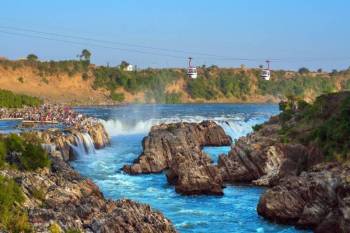 7D/6N
7D/6N
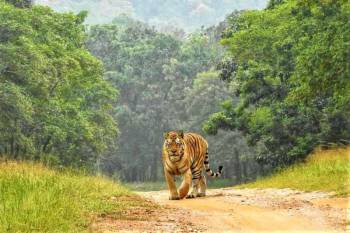 7D/6N
7D/6N
 10D/9N
10D/9N
11 Days Madhya Pradesh Tour From Jabalpur
Indore - Jabalpur - Khajuraho - Pachmarhi - Ujjain - Omkareshwara - Khargone - Anup..
 7D/6N
7D/6N
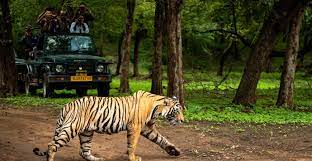 6D/5N
6D/5N
6 Days MP Tourism Package From Jabalpur
Bandhavgarh - Jabalpur - Kanha - Seoni
 9D/8N
9D/8N
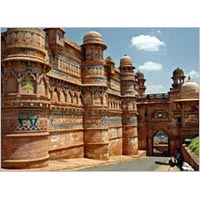 15D/14N
15D/14N
New Delhi - Agra - Gwalior - Bhopal - Indore - Mumbai - Tikamgarh - Chhatarpur - Au..
 15D/14N
15D/14N
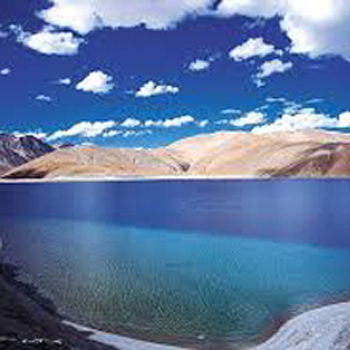 15D/14N
15D/14N
 15D/14N
15D/14N
Chandigarh - Shimla - Manali - Dalhousie - Amritsar - Dharamshala
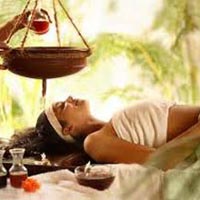 15D/14N
15D/14N
New Delhi - Haridwar - Rishikesh - Shivpuri - Agra - Jaipur
 15D/14N
15D/14N
 15D/14N
15D/14N
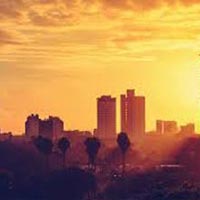 15D/14N
15D/14N
 15D/14N
15D/14N
 12D/11N
12D/11N
11 Nights 12 Days - Delhi Agra Rajasthan
New Delhi - Mathura - Agra - Jaipur - Ajmer - Pushkar - Udaipur - Mount Abu - Ranak..
 12D/11N
12D/11N
11 Nights - 12 Days Nepal Tour From Gora..
Prayagraj - Gorakhpur - Varanasi - Ayodhya - Kathmandu - Pokhara - Chitwan - janakpur
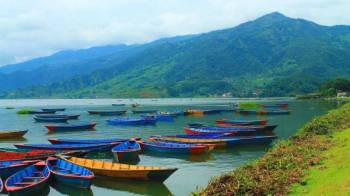 12D/11N
12D/11N
11 Nights - 12 Days Nepal Tour From Gora..
Prayagraj - Gorakhpur - Varanasi - Ayodhya - Kathmandu - Pokhara - Chitwan - janakpur
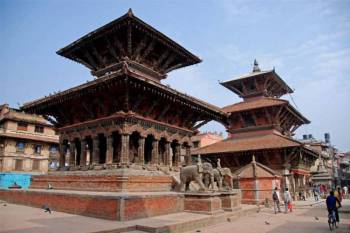 12D/11N
12D/11N
11 Nights - 12 Days Nepal Tour Package - 2
Prayagraj - Gorakhpur - Varanasi - Ayodhya - Kathmandu - Pokhara - Chitwan - janakpur
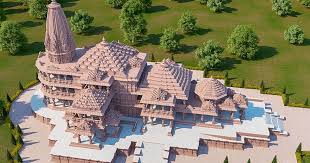 12D/11N
12D/11N
Prayagraj - Varanasi - Bodhgaya - Ayodhya - Pokhara - Chitwan - Parsa
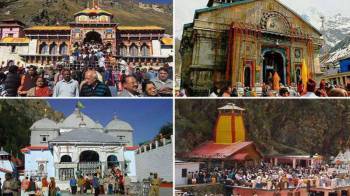 11D/10N
11D/10N
10 Nights - 11 Days Char Dham Yatra Pack..
Kedarnath - Badrinath - Yamunotri - Gangotri - Rishikesh - Rudraprayag - Uttarkashi..
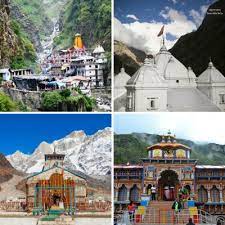 11D/10N
11D/10N
10 Night 11 Days Uttarakhand Tour Packag..
Kedarnath - Badrinath - Yamunotri - Gangotri - Rishikesh - Rudraprayag - Uttarkashi..
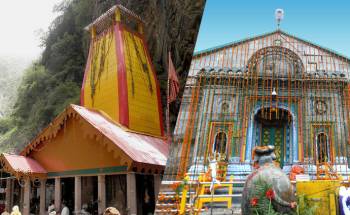 11D/10N
11D/10N
10 Night Uttarakhand Tour From Haridwar
Haridwar - Kedarnath - Badrinath - Yamunotri - Gangotri - Rishikesh - Barkot - Gupt..
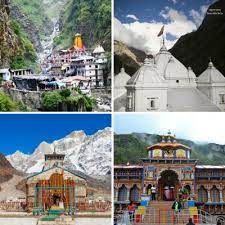 11D/10N
11D/10N
10 Night 11 Days Uttarakhand Tour Packag..
Kedarnath - Badrinath - Yamunotri - Gangotri - Rishikesh - Rudraprayag - Uttarkashi..